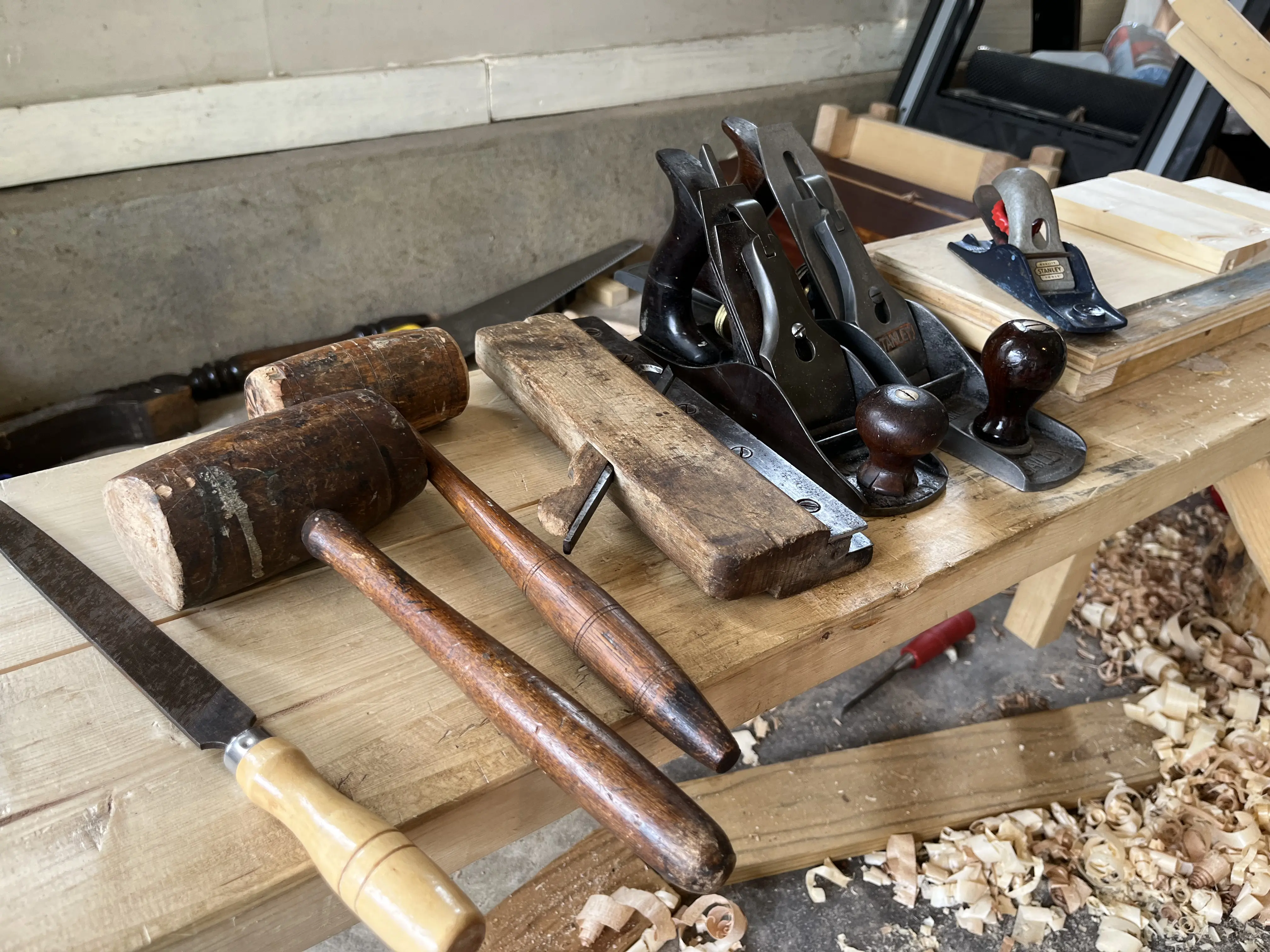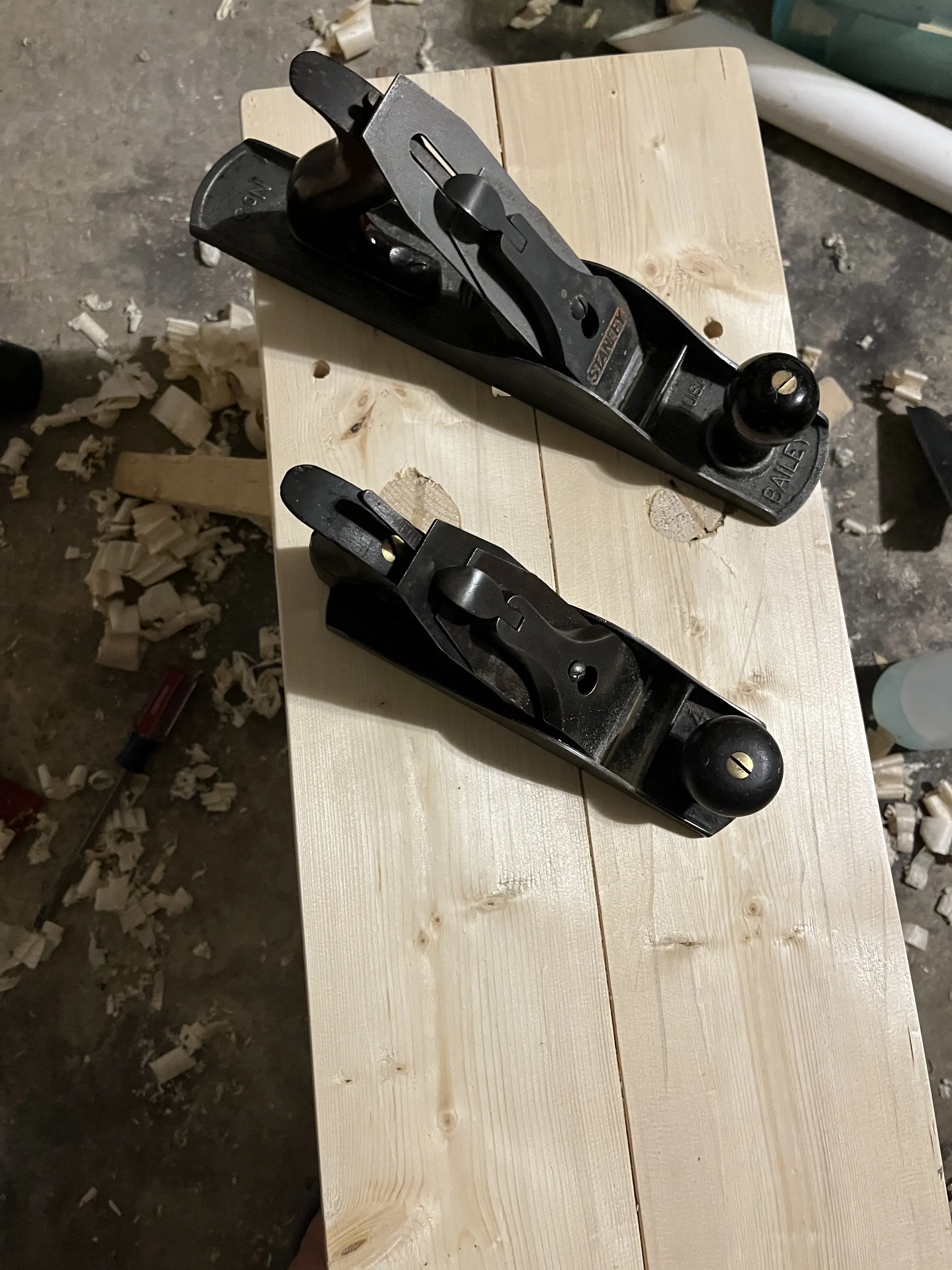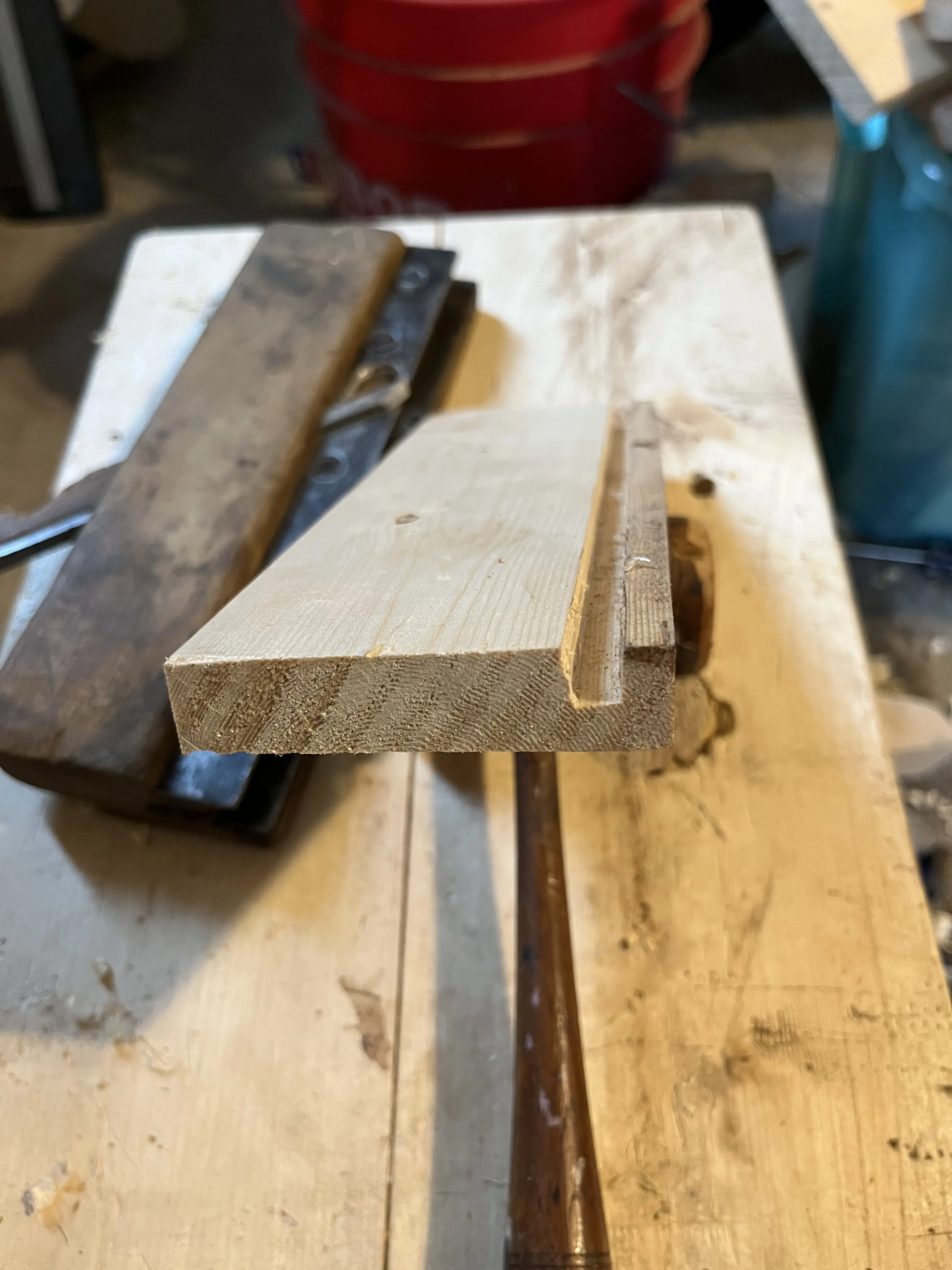As I’m beginning hand woodworking, I’m collecting tools from eBay, antique stores, and garage/estate sales. It’s really rewarding to take an old forgotten tool and bring it back to performing its function and not just becoming a decoration of cute old stuff.
Getting Into Restoration
New tools of any real quality are very expensive. I have been able to purchase inexpensive tools and put a lot of work into getting them into shape. But budget planes, etc. can’t be compensated for with work.
Since I can’t afford to spend Veritas money on this side hobby, I got into fixing up old Stanley planes, random chisels, etc. That has really turned into a rewarding hobby in itself.
Here’s a subset of what I’ve accumulated and restored.

My First Restoration
I did get overly excited at an antique shop and purchased a very pitted Stanley #5 plane for too much money. At this point, I have no real regrets though. It’s setup as a scrub plane and despite the pitted corrugated sole, I was able flatten and smooth it enough that it does its job well.
It is a 1950s model as well, which is less “valuable.” But I do like the “bean” on the lever cap and the larger adjustment wheel.
Other than the fettling, I only had to replace the front screw on the back tote.
I also picked up corner vice with it, that’s proved to be handier than I thought.

You can see the original shape it was in there and what it looks like now in the top image.
I did a lot of things wrong that ended up with a lot of redundant work. Evaporust is cool stuff, but is a total waste of time, especially on cast iron. A good brass wire wheel on a bench grinder and my drill press is a lot more effective and was necessary in the end anyway. Then working through sanding from 180-320 grit sandpaper on all the surfaces. Then it’s off to honing the irons.
Smarter with Planes
I picked up a Stanley #4 smoother off eBay for a much better price due to a big crack in the tote. Mostly what I would call “tarnish” more than proper rust. It’s also a little bit more interesting as it dates to 1902-1907. I’m not into getting the most valuable vintage tool, and honestly prefer the later improvements. But there is something cool about bringing something >100 years old back to life and doing what it was built for.
Wire brushing was not required, just gentle application of sandpaper.
The tote needed work. Someone had previously tried to join the 2 cracked sections with a screw… yeah. Also the lateral adjustment level was hindered by the tote. That’s still a little puzzling to me since the bolt in the tote was trimmed as most are.
I cleaned it up, sanded down the split and glued it back together with some Titebond III as well as filling in the screw hole with some scrap. I need the glue to hold up to the Memphis humidity in my garage workshop.

It does not have a lot of life left in the iron. I’m torn between replacing with a vintage iron and doing work to get a modern thick iron going in it.
It is now a an amazing smoothing plane to me. The combo of my #5 and #4 has been great. Hogging through the wood and then getting to a glass finish is so rewarding.
Dado Plane
I was in an antique shop in Arkansas with mostly junk when I stumbled on an old plan for making drawer dados. It was dimly lit on a bright day so I couldn’t make out a lot, but for $18 it was worth just the research project.
It turns out to be from about the 1860s and just needed a little work removing some rust. The wood is in great shape and the iron was brought to sharp with surprisingly little effort.

It’s a 1 trick pony, but still awesome. I could get a drawer done with it faster than swapping out table saw blades.
More to Come
I have some more tools to catch up on and will continue to post them as I do the work. I have a saw vice coming in hopefully next week that I’m pretty excited about.
I might also call out great new tools I get. So far, that’s been some great low-end Narex gouges and one of their mortise chisels. I’ve primarily been buying pretty cheap tools and picking up vintage replacements if I find myself using the tool a lot.
